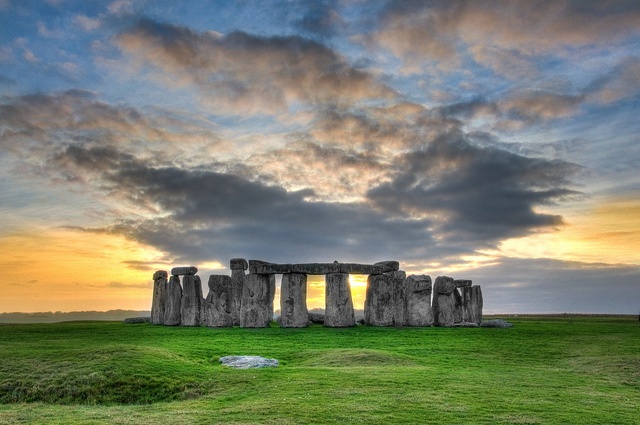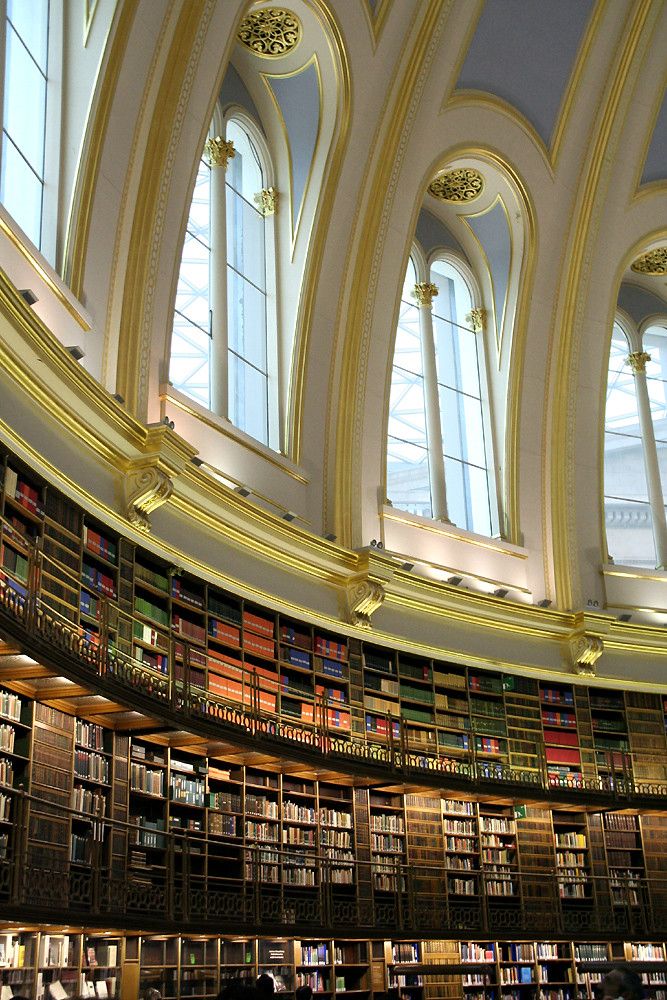England, a land of rich history, diverse culture, and stunning landscapes, is a top destination for travelers from around the world. With its bustling cities, picturesque countryside, and a wealth of historical sites, England offers something for everyone. However, the best time to visit England, this enchanting country depends on your preferences and what you hope to experience during your stay. England experiences distinct seasons, and each has its own charm. In this article, we’ll explore the pros and cons of visiting England in each season to help you decide when the best time for your trip might be.

When is the best time to visit England?
As a passionate traveler, you’re likely eager to explore the beautiful landscapes, rich history, and diverse culture of England. However, choosing the perfect time to visit this enchanting country is key to ensuring a memorable journey. To help you plan your trip, let’s dive into a month-by-month guide to traveling in England, uncover the languages spoken, explore the local currency, get acquainted with the climate, and discover the unique charm of each season.
Spring Awakening(March to May):
Spring in England is a time of renewal when the landscapes burst into vibrant colors. The countryside comes alive with blooming flowers and fresh greenery, making it an ideal time for nature enthusiasts and photographers. The temperatures are mild, ranging from 8°C to 15°C (46°F to 59°F), making it pleasant for outdoor activities. March to May also sees fewer tourists, making it an excellent time for a more relaxed and less crowded experience. Be sure to visit the famous Chelsea Flower Show in London if you’re a fan of horticulture.
Pros:
- Mild weather and blooming landscapes.
- Fewer tourists and shorter lines at popular attractions.
- Ideal for outdoor activities like hiking and picnicking.
Cons:
- Spring showers are common, so carry an umbrella or raincoat.
- Some attractions and gardens may still be closed or have limited hours.

Summer Splendor(June to August):
Summer in England is a popular time to visit due to the pleasant weather and a multitude of outdoor events and festivals. Average temperatures range from 15°C to 21°C (59°F to 70°F). This is when you can enjoy long, sunny days and explore the cities, parks, and beaches. Popular events like Wimbledon, the Royal Ascot, and Glastonbury Festival take place during the summer months. However, it’s also the peak tourist season, so expect larger crowds and higher prices.
Pros:
- Warm and sunny weather.
- A wide range of festivals and events.
- Extended opening hours for most attractions.
Cons:
- Crowded tourist destinations.
- Higher prices for accommodation and activities.

Autumn Palette(September to November):
Autumn is a wonderful time to visit England if you appreciate the beauty of fall foliage and cooler temperatures. The average temperature varies between 13°C and 18°C (55°F to 64°F). This season is perfect for exploring the countryside, with stunning landscapes bathed in shades of red and gold. The crowds begin to thin out after the summer rush, making it easier to enjoy popular attractions. The harvest season is also celebrated with various food and drink festivals, such as the apple harvest in Herefordshire.
Pros:
- Beautiful fall foliage and cooler weather.
- Reduced tourist crowds.
- Food and drink festivals celebrating the harvest season.
Cons:
- Some attractions may have shorter opening hours compared to summer.
- Variable weather with occasional rain.

Winter Wonderland and Festive Cheer(December to February):
Winter in England offers a unique experience, especially if you’re drawn to cozy pubs, Christmas markets, and historic sites without the summer crowds. The temperatures range from 2°C to 7°C (36°F to 45°F), making it a bit chilly, but it’s the season for festive cheer. London is beautifully lit up during the holiday season, and you can visit Christmas markets in various cities. However, it’s essential to be prepared for occasional rain and shorter daylight hours.
Pros:
- Festive ambiance with Christmas markets and decorations.
- Fewer tourists and shorter lines at attractions.
- Lower accommodation rates.
Cons:
- Chilly and damp weather.
- Shorter daylight hours and reduced outdoor activities.

A Month-by-Month Guide for Traveling Persons
If you’re a keen traveler, and the enchanting landscapes and rich history of the United Kingdom have piqued your interest, you’re probably wondering: when is the best time to visit the UK? The answer, much like the UK itself, is delightfully diverse. This month-by-month guide will help you navigate the seasons, revealing the unique charms and experiences each one has to offer.
January – Embrace the Chills:
The UK might be a bit frosty in January, but don’t let that deter you. London, in particular, is less crowded, which means shorter lines at museums and attractions. Plus, you can witness the stunning winter illuminations, a sight to behold.

February – Valentine’s in the UK:
England is romantic any time of year, but February is when love fills the air. Visit the Lake District for picturesque walks or escape to the charming town of Bath for a relaxing soak in the Roman baths.

March – Spring Awakening:
As March rolls around, the UK starts to awaken from its winter slumber. Head to Cornwall or Devon to enjoy the budding flowers, or venture to Oxford to experience the timeless elegance of the city.

April – Cherry Blossoms and Easter Delights:
For a springtime escape, think about April. The cherry blossoms in Kew Gardens, London, are a must-see. Plus, you’ll be in time for Easter celebrations, complete with chocolate eggs and Easter parades.
.jpg)
May – Blooms and Bluebells:
May is the month of lush greenery and blossoms. Visit the Cotswolds to see charming villages surrounded by fields of wildflowers and bluebells.

June – The Summer Unfolds:
The official start of the British summer! Plan your visit to coincide with the Royal Ascot, a quintessential British horse racing event, or explore the idyllic Scottish Highlands.

July – Summer Festivals Galore:
July is festival season! Head to Glastonbury for world-class music or visit the Edinburgh Festival Fringe for arts and culture. Don’t forget the UK’s pristine beaches, too.

August – Seaside Retreat:
If you’re craving a coastal escape, August is the time to hit the beaches in Cornwall, Devon, or even the stunning Pembrokeshire Coast in Wales.

September – Autumn’s Palette:
As summer winds down, the UK dons its autumn colors. The Lake District is enchanting during this time, with its golden landscapes and shimmering lakes.

October – Haunting Halloween:
For those who love a good scare, October is ideal. Explore the eerie tales of York or visit the historic Tower of London for a ghostly encounter.
.jpg)
November – Bonfire Night:
Guy Fawkes Night, celebrated on November 5th, is a quintessential British experience. Witness impressive fireworks displays and enjoy hearty food like toffee apples and parkin cake.
.jpg)
December – Festive Magic:
End the year on a high note by experiencing the UK’s magical Christmas markets. From London’s Winter Wonderland to Bath’s Christmas Market, you’ll be immersed in the festive spirit.
.jpg)
Languages Spoken in England
While English is the primary language spoken in England, you’ll find a rich tapestry of dialects, accents, and regional variations. The diversity of the language itself adds to the charm of the country, with accents varying significantly from region to region.
The Currency of England
The official currency of England is the British Pound Sterling (£). It’s widely accepted throughout the country, and you’ll find ATMs readily available in cities and towns for convenient currency exchange.
Average Temperatures in England
England experiences a temperate maritime climate. The average temperatures vary across the seasons:
Spring: 8°C to 15°C (46°F to 59°F)
Summer: 15°C to 21°C (59°F to 70°F)
Autumn: 13°C to 18°C (55°F to 64°F)
Winter: 2°C to 7°C (36°F to 45°F)
Climate in England
England’s climate is characterized by its changeable and unpredictable weather. Rain showers are common throughout the year, so it’s wise to pack an umbrella or a raincoat when you travel.
Best Season to Visit England
Are you planning a journey to England and wondering when the best time to visit is? Well, as a seasoned traveler, I’ve explored the picturesque landscapes and historic sites of England in various seasons. Let me take you on a virtual tour through the best times to visit England and share some fantastic places and activities to consider during each season.
Summer Season in England: Embrace the Sunshine
England truly comes alive during the summer months, with June to August offering travelers the perfect opportunity to explore the best of this enchanting country. The weather is delightfully warm, with average temperatures ranging from 15°C to 21°C (59°F to 70°F). It’s the season of long, sunny days, making it ideal for outdoor adventures. Here are some places to visit and activities to relish during summer in England:
1. Cornwall: This southwestern gem is known for its stunning beaches, including the famous Porthcurno Beach. Enjoy surfing, coastal walks, and exploring the charming fishing villages.
2. Lake District: For nature enthusiasts, the Lake District National Park offers breathtaking views, serene lakes, and hiking trails, including the iconic Catbells hike.
3. Notting Hill Carnival, London: Join the vibrant celebrations at Europe’s largest street festival, held over the August bank holiday weekend.

Monsoon Season in England: Drizzle of Charm
While monsoon in England, spanning from September to November, may not seem like the most obvious choice for a visit, it brings its own unique charm. Average temperatures vary between 13°C and 18°C (55°F to 64°F), and the landscape transforms into shades of red and gold. Here are some places to explore during the English monsoon:
1. The Cotswolds: Known for its quaint villages and rolling hills, this area is postcard-perfect during the fall season. Enjoy leisurely walks, scenic drives, and cozy village pubs.
2. The Chatsworth House, Derbyshire: Visit this magnificent stately home with its grand gardens and impressive art collection. The fall foliage adds to the estate’s charm.

3. Oxford: Explore the historic city of Oxford, known for its prestigious university and beautiful architecture. The campus looks especially enchanting in the fall.
Winter Season in England: Cozy Up to the Holiday Spirit
While winter in England, from December to February, might bring colder temperatures (ranging from 2°C to 7°C or 36°F to 45°F), it’s the season of festive cheer. England lights up during the holiday season, and Christmas markets are a delight. Here are some places to visit and activities to enjoy during an English winter:
1. Bath Christmas Market: Wander through the enchanting streets of Bath during its Christmas market. Sip on mulled wine and shop for unique gifts.

2. York: Explore the historic city of York, with its charming medieval streets and the stunning York Minster, all adorned with Christmas lights.
3. The Cotswold Way: Experience a winter wonderland by walking parts of the Cotswold Way and witness the picturesque countryside covered in frost.
Major UK Public Holidays:
New Year’s Day (January 1st): The UK, like many countries, welcomes the New Year with enthusiasm. Expect grand fireworks displays, especially in London and Edinburgh. Many businesses and attractions may be closed on this day.
Easter Sunday (date varies): Easter Sunday typically falls in March or April. It’s a time of religious observance and chocolate egg hunts. Public transport may have limited services on Easter Sunday.
May Day (first Monday in May): May Day is a celebration of spring, and you’ll find various events, including traditional maypole dancing. It’s a great time to witness the blooming landscapes.
Spring Bank Holiday (last Monday in May): This long weekend is perfect for a quick getaway. Be prepared for crowded tourist destinations as many Brits take advantage of this extra day off.
Summer Bank Holiday (last Monday in August): Another opportunity for a long weekend, and often, the last chance to enjoy the summer before autumn sets in.
Christmas Day (December 25th): Christmas is a major holiday in the UK, with many businesses closing for the day. It’s a special time to experience festive traditions, including Christmas markets and carol concerts.
Boxing Day (December 26th): Boxing Day is a time for shopping, watching sporting events like football, and enjoying leftovers from the Christmas feast. Some tourist attractions may reopen on this day.
While these are the major public holidays in the UK, there are other regional holidays and celebrations throughout the year. Keep in mind that on these days, public transport may run on a reduced schedule, and some shops and attractions may be closed, so it’s a good idea to plan your trip around these dates if you want to make the most of your visit.
Advantages and Disadvantages of Visiting England During Shoulder Season
The “shoulder season” in England, which falls between the peak tourist seasons, can be an excellent time to plan your visit. Here are some advantages and disadvantages of traveling to England during this time.
Advantages of Visiting England During Shoulder Season:
Fewer Crowds: One of the most significant benefits of traveling during the shoulder season is the reduced number of tourists. You can explore popular attractions without the long lines and heavy crowds.
Lower Prices: Accommodation, flights, and tours often come with lower price tags during the shoulder season. You can save money on your trip and spend it on other experiences.
Pleasant Weather: The weather during shoulder season can be quite pleasant. It’s not too hot, and it’s not too cold. This makes it ideal for outdoor activities like hiking and sightseeing.
Disadvantages of Visiting England During Shoulder Season:
Unpredictable Weather: While the weather can be pleasant, it can also be unpredictable. You might experience rain or chilly days, so it’s essential to pack accordingly.
Limited Opening Hours: Some attractions, especially those in more remote areas, may have reduced opening hours during the shoulder season, so make sure to check in advance.
Less Vibrant Atmosphere: Compared to the peak tourist seasons, the ambiance in some areas might be less vibrant. Fewer events and festivals may be happening during this time.
In the end, the decision to visit England during the shoulder season depends on your preferences. If you appreciate fewer crowds, budget-friendly options, and pleasant weather, it might be the perfect time for your adventure.
Best Time to Visit North England
When planning a visit to the northern part of England, timing is crucial. Northern England is a region rich in history, stunning landscapes, and vibrant cities. So, when is the best time to explore the wonders of the North?
Spring (March to May): Spring in the North of England brings blooming gardens, making it a perfect time for nature enthusiasts. The weather is mild, and you can enjoy the Lake District, Yorkshire Dales, and historical cities like York without the summer crowds.
Summer (June to August): If you prefer sunny weather and outdoor activities, summer is ideal. This is the season for festivals, hiking in the Peak District, and exploring the cities like Manchester and Liverpool. Just be prepared for more tourists.
Autumn (September to November): For those who appreciate fall foliage, autumn is a spectacular time. The northern countryside turns into a tapestry of warm colors, and the weather remains relatively mild. It’s an excellent time for hiking and visiting historic sites.
Winter (December to February): If you’re a fan of Christmas markets, winter is perfect. Cities like Manchester and York transform into winter wonderlands. While it’s colder, the North offers a cozy and festive atmosphere during this season.
Ultimately, the best time to visit Northern England depends on your interests, whether it’s outdoor adventures, cultural exploration, or festive celebrations.

Best Time to Visit South England
Southern England, with its historic landmarks, charming coastal towns, and mild climate, is a delightful destination. But when is the ideal time to explore this region’s beauty?
Spring (March to May): Spring is a lovely time to visit Southern England. The weather is comfortable, and gardens like Kew and Sissinghurst burst with color. Coastal towns, such as Brighton and Bournemouth, come to life, and you can explore historical sites like Stonehenge.
Summer (June to August): Summer is the peak tourist season in the South, thanks to the warm and sunny weather. This is when the beaches, especially in Cornwall and Devon, are at their best. Don’t miss the Royal Ascot and the Henley Royal Regatta if you’re a fan of quintessential British events.
Autumn (September to November): Autumn brings a different charm to the South. The coastal towns are less crowded, and you can enjoy pleasant walks along the shores. The New Forest and South Downs National Parks are great for hiking during this season.
Winter (December to February): While it may be colder, winter in the South is far milder than in other parts of the world. It’s an excellent time to explore historical cities like Oxford and Cambridge without the crowds. Coastal towns maintain their charm, and you can warm up with cream tea in cozy tearooms.
The best time to visit Southern England depends on your preferences, whether you want to enjoy the beaches, explore historical sites, or savor the peaceful charm of coastal towns.

Weather in England: A Guide to Year-round Climate
As any seasoned traveler knows, understanding the local climate is crucial when planning your journey. In England, the weather can be unpredictable, but there are some general trends to keep in mind. Spring (March to May) brings milder temperatures, blooming landscapes, and fewer tourists. Summer (June to August) is when you’ll enjoy warm, sunny days, but be prepared for larger crowds. Autumn (September to November) offers stunning fall foliage and reduced tourist crowds. Winter (December to February) can be chilly, but it’s perfect for experiencing festive cheer.
Peak Season vs Low Season: Pros and Cons for Traveling
When to visit England largely depends on your preferences and what kind of travel experience you desire. Summer is the peak season, with pleasant weather and numerous festivals, but it comes with the downside of larger crowds and higher prices. On the other hand, if you’re looking for a quieter experience with reduced expenses, consider the low seasons of spring and autumn, where you can still enjoy beautiful landscapes and cultural celebrations without the crowds.
Festivals and Events: Timing Your Visit for Cultural Celebrations
For travelers who appreciate immersing themselves in local culture, timing your visit to coincide with festivals and events is a fantastic idea. Summer hosts renowned events like Wimbledon, the Royal Ascot, and Glastonbury Festival, making it perfect for music and sports enthusiasts. If you prefer a more traditional experience, England’s Christmas markets and holiday decorations during winter offer a unique cultural immersion.
Avoiding Crowds: When to Visit England
Avoiding crowds can make your journey more enjoyable and relaxing. Traveling in the low seasons of spring and autumn is a surefire way to experience popular attractions without the hustle and bustle of tourists. Reduced lines and shorter waiting times at renowned spots are a traveler’s dream.
Outdoor Activities: The Best Time for Sightseeing and Hiking
If you’re an adventurous traveler who loves exploring the great outdoors, timing your trip for outdoor activities is crucial. Spring and autumn are excellent for sightseeing and hiking due to their mild weather and stunning landscapes. Whether you’re exploring the countryside, hiking in the Lake District, or picnicking in the Cotswolds, these seasons offer the perfect backdrop.
Family Vacation: The Best Time for Kid-Friendly Activity
Traveling with the little ones? Spring and summer are your best allies. From March to August, England comes alive with the colors of blooming flowers and pleasant weather. Take your family to explore the charming countryside, enjoy picnics, and discover the countless outdoor adventures awaiting in the mild spring and warm summer. With fewer crowds early in spring, it’s the perfect time to explore family-friendly destinations like the Cotswolds, Stratford-upon-Avon, or the enchanting gardens across the country.
What Time of Year is the Best Weather in England?
For the finest weather, spring and summer, specifically from May to August, are your go-to seasons. The temperatures are mild, and you’ll have a higher chance of encountering sunny days, making it perfect for outdoor adventures and sightseeing
When is the Best Time to Visit Museums and Galleries in England?
If you’re an art enthusiast, England boasts a wealth of museums and galleries to explore. Here are some prime choices:
The British Museum:
Open year-round, the British Museum offers a glimpse into human history and culture, making it a captivating visit in any season.

The National Gallery:
Located in London, this gem is also open throughout the year and showcases a stunning collection of European paintings.
Victoria and Albert Museum:
Another London attraction, the V&A Museum is perfect for culture vultures, and its indoor exhibits make it suitable for winter visits.
Birmingham Museum & Art Gallery:
This Midlands treasure is a year-round delight, housing a diverse collection that caters to all tastes.
Conclusion:
In conclusion, the best time to visit England largely depends on your preferences and what you aim to experience during your trip. Spring and autumn offer pleasant weather, fewer crowds, and beautiful landscapes, while summer and winter have their unique charms and attractions. Regardless of when you choose to visit, England’s rich history, culture, and natural beauty will ensure an unforgettable travel experience. Thanks for reading, visit again here Journey Index.




